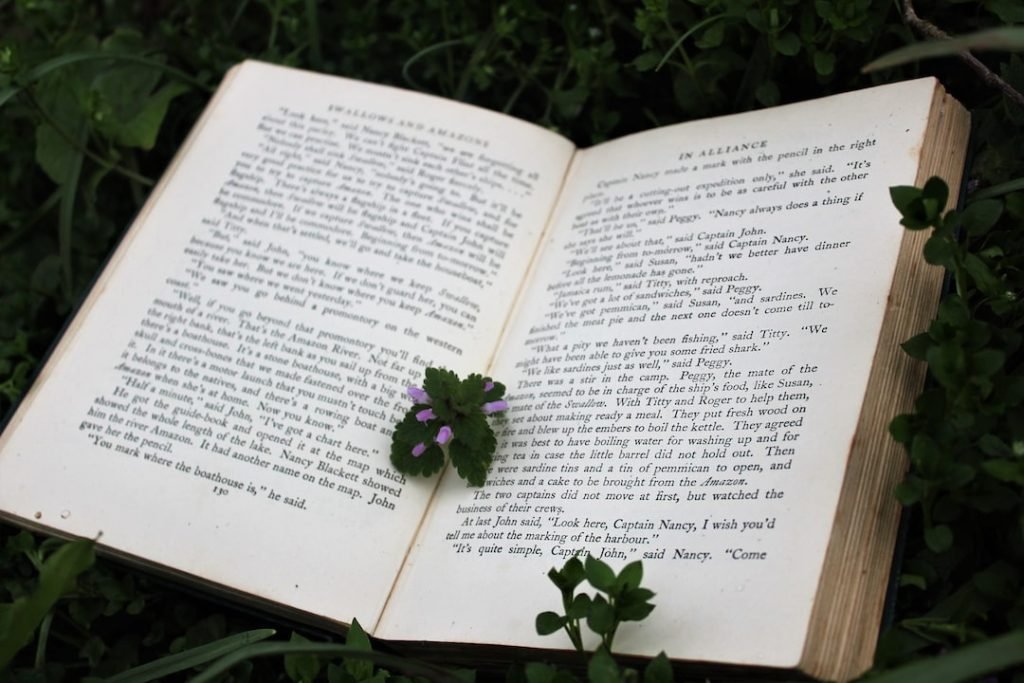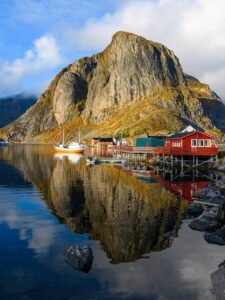

15 Ways to Discuss Norwegian Literature and Books
Norwegian literature has a rich and vibrant history that dates back centuries. It is a reflection of the country’s culture, history, and identity. From the sagas of the Viking Age to the modern works of contemporary authors, Norwegian literature offers a unique perspective on life in Norway and provides readers with a deeper understanding of the country and its people.
Exploring literature from different cultures is important as it allows us to broaden our horizons and gain new perspectives. By reading Norwegian literature, we can immerse ourselves in the language, traditions, and values of Norway. It allows us to step into the shoes of Norwegian authors and experience their world through their words. Through literature, we can learn about different cultures, gain empathy for others, and expand our knowledge and understanding of the world.
Table of Contents
ToggleKey Takeaways
- Norwegian literature has a rich history and is known for its exploration of themes such as nature, identity, and social issues.
- The earliest known Norwegian literature dates back to the Viking Age, and the country has produced many notable authors throughout its history.
- Major themes in Norwegian literature include the relationship between humans and nature, the struggle for individual identity, and social issues such as class and gender inequality.
- Popular Norwegian authors include Henrik Ibsen, Knut Hamsun, and Jo Nesbø, among others.
- Contemporary Norwegian literature continues to explore these themes and has gained international recognition in recent years.
Historical Overview of Norwegian Literature
Norwegian literature has its roots in the ancient Norse sagas, which were oral stories passed down through generations. These sagas were eventually written down in the 13th century and are considered some of the earliest examples of Norwegian literature. The sagas were tales of adventure, heroism, and mythology that captured the imagination of readers then and continue to do so today.
In the 19th century, Norwegian literature experienced a period of great growth and development. This was known as the Golden Age of Norwegian Literature and was marked by the emergence of several influential authors. Henrik Ibsen, often referred to as the father of modern drama, wrote plays that challenged societal norms and explored complex themes such as morality, gender roles, and social inequality.
Major Themes in Norwegian Literature
One of the major themes in Norwegian literature is the exploration of nature and the outdoors. Norway’s stunning landscapes, with its fjords, mountains, and forests, have inspired countless authors to write about their beauty and power. From Henrik Ibsen’s “Peer Gynt,” which takes place in the Norwegian mountains, to Knut Hamsun’s “Hunger,” which depicts the struggles of a starving writer in Oslo, nature plays a central role in Norwegian literature.
Another important theme in Norwegian literature is social and political issues. Many Norwegian authors have used their works to critique society and shed light on social injustices. For example, Sigrid Undset’s historical fiction trilogy, “Kristin Lavransdatter,” explores the role of women in medieval society and challenges traditional gender roles. Jo Nesbø’s crime thrillers often delve into political corruption and the dark underbelly of Norwegian society.
Identity and self-discovery are also recurring themes in Norwegian literature. Many authors explore what it means to be Norwegian and grapple with questions of national identity. Karl Ove Knausgård’s autobiographical novels, collectively known as “My Struggle,” delve into his personal experiences and struggles with identity, family, and art.
Love and relationships are universal themes that are explored in Norwegian literature as well. From the passionate love affairs in Henrik Ibsen’s plays to the complicated relationships in Karl Ove Knausgård’s novels, love is a central theme that resonates with readers across cultures.
Finally, death and mortality are often explored in Norwegian literature. The harsh landscapes and long winters of Norway have shaped the country’s relationship with death. Many authors use their works to reflect on the fragility of life and the inevitability of death.
Popular Norwegian Authors and their Works
Norwegian literature has produced many notable authors whose works have had a lasting impact on the literary world. Henrik Ibsen is perhaps the most famous Norwegian author, known for his plays such as “A Doll’s House” and “Hedda Gabler.” His works challenged societal norms and explored complex themes such as morality, gender roles, and social inequality.
Knut Hamsun is another influential Norwegian author, best known for his novel “Hunger.” The novel tells the story of a starving writer in Oslo and explores themes of poverty, isolation, and the creative process. Hamsun’s works are known for their psychological depth and lyrical prose.
Sigrid Undset is a Norwegian author who is best known for her historical fiction trilogy, “Kristin Lavransdatter.” The trilogy tells the story of a woman’s life in medieval Norway and explores themes of love, faith, and the role of women in society. Undset’s works are known for their meticulous historical research and vivid storytelling.
Jo Nesbø is a contemporary Norwegian author who has gained international acclaim for his crime thrillers featuring detective Harry Hole. Nesbø’s novels are known for their gripping plots, complex characters, and atmospheric settings. His works have been translated into over 50 languages and have sold millions of copies worldwide.
Karl Ove Knausgård is another contemporary Norwegian author who has gained international recognition for his autobiographical novels, collectively known as “My Struggle.” The novels delve into Knausgård’s personal experiences and struggles with identity, family, and art. His works have been praised for their raw honesty and introspection.
Contemporary Norwegian Literature Scene
Norwegian literature continues to thrive with the emergence of new and exciting authors. The contemporary literature scene in Norway is vibrant and diverse, with authors exploring a wide range of themes and genres.
Some emerging authors to watch include Maja Lunde, whose novel “The History of Bees” has gained international acclaim; Lars Mytting, known for his novel “The Sixteen Trees of the Somme,” which explores family secrets and the power of nature; and Vigdis Hjorth, whose novel “Will and Testament” tackles themes of family dynamics and inheritance.
Norway also hosts several literary festivals and events that celebrate the country’s rich literary heritage and showcase the works of contemporary authors. The Oslo Literary Festival, the Bergen International Festival, and the Lillehammer Literature Festival are just a few examples of the many literary events that take place in Norway each year.
The impact of technology on Norwegian literature cannot be ignored. With the rise of e-books and digital publishing, authors have new platforms to reach readers and promote their works. Social media has also played a significant role in connecting authors with their readers and creating a sense of community among literary enthusiasts.
Norwegian Literature in Translation

While Norwegian literature is highly regarded in its native language, it is also important to promote and translate these works into other languages to reach a wider audience. Translating Norwegian literature allows readers from different cultures to experience the unique perspectives and storytelling traditions of Norwegian authors.
Several popular Norwegian books have been translated into English and other languages. Henrik Ibsen’s plays, such as “A Doll’s House” and “Hedda Gabler,” have been widely translated and performed around the world. Knut Hamsun’s novel “Hunger” has also been translated into numerous languages and is considered a classic of modernist literature.
However, translating Norwegian literature can be challenging due to the nuances of the language and cultural references that may not easily translate into other languages. Translators must carefully navigate these challenges to ensure that the essence of the original work is preserved.
Translation plays a crucial role in promoting Norwegian literature globally. It allows readers from different cultures to access and appreciate the works of Norwegian authors, fostering cultural exchange and understanding. It also helps to elevate Norwegian literature on the international stage and bring attention to the country’s rich literary tradition.
Norwegian Children’s Literature
Norwegian children’s literature has a long and storied history that dates back to the 19th century. The genre has produced many beloved authors and characters that have become a part of Norwegian culture.
One of the earliest and most influential Norwegian children’s authors is Asbjørnsen and Moe, who collected and published traditional Norwegian folktales. Their collection, “Norwegian Folktales,” is considered a classic of children’s literature and has been translated into numerous languages.
Other popular Norwegian children’s authors include Thorbjørn Egner, known for his books “Karius and Baktus” and “The Little Old Lady Who Broke All the Rules,” and Anne-Cath. Vestly, known for her series of books about the character Ole Aleksander Filibom-bom-bom.
Children’s literature plays an important role in Norwegian society. It helps to instill a love of reading from a young age and promotes literacy and imagination. Norwegian children’s authors often tackle important themes such as friendship, family, and the environment, providing young readers with valuable life lessons.
Norwegian Literary Awards and Recognitions
Norway has a rich tradition of literary awards that recognize and celebrate the achievements of Norwegian authors. These awards play an important role in promoting Norwegian literature and raising awareness of the country’s literary talent.
One of the most prestigious literary awards in Norway is the Nordic Council Literature Prize, which is awarded annually to a work of fiction written in one of the Nordic languages. Several Norwegian authors have been recipients of this award, including Karl Ove Knausgård for his novel “My Struggle” and Per Petterson for his novel “Out Stealing Horses.”
Other notable literary awards in Norway include the Brage Prize, which recognizes outstanding works of fiction, non-fiction, and children’s literature; the Tarjei Vesaas’ Debutant Prize, which honors promising new authors; and the Aschehoug Prize for outstanding contributions to Norwegian literature.
Winning international literary awards can have a significant impact on Norwegian literature. It brings attention to Norwegian authors and their works, helping to elevate them on the global stage. It also encourages translation and promotes cultural exchange between different countries.
Norwegian Literature and Society
Literature plays a crucial role in shaping Norwegian society. It reflects the values, beliefs, and concerns of the people and provides a platform for discussing important social issues.
Norwegian authors have often used their works to critique society and shed light on social injustices. For example, Henrik Ibsen’s plays challenged societal norms and explored themes such as gender roles, social inequality, and the role of women in society. Sigrid Undset’s historical fiction tackled issues of gender, religion, and the role of women in medieval society.
The relationship between literature and politics in Norway is also significant. Many Norwegian authors have been politically engaged and have used their works to comment on political issues. For example, Jo Nesbø’s crime thrillers often delve into political corruption and the dark underbelly of Norwegian society.
Social issues also play a significant role in Norwegian literature. Authors often tackle themes such as poverty, immigration, environmentalism, and mental health, providing readers with a deeper understanding of these complex issues.
The Future of Norwegian Literature and Books
The future of Norwegian literature is bright and promising. The country continues to produce talented authors who are pushing the boundaries of storytelling and exploring new themes and genres.
Technology will undoubtedly play a significant role in the future of Norwegian books. E-books and digital publishing have already transformed the way books are consumed and distributed. Authors will need to adapt to these changes and find new ways to reach readers in an increasingly digital world.
Despite these changes, it is important to promote and preserve Norwegian literature for future generations. Literature provides a window into the past, allowing us to understand our history and culture. By preserving Norwegian literature, we ensure that future generations can continue to explore and appreciate the unique perspectives and storytelling traditions of Norwegian authors.
In conclusion, Norwegian literature offers a rich and diverse body of work that reflects the country’s culture, history, and identity. From the sagas of the Viking Age to the modern works of contemporary authors, Norwegian literature provides readers with a unique perspective on life in Norway. By exploring literature from different cultures, we can broaden our horizons, gain new perspectives, and foster cultural exchange and understanding. The future of Norwegian literature is bright, and it is important to promote and preserve these works for future generations.
If you’re interested in diving deeper into Norwegian literature and books, you might also find this article on “The Beauty of Norwegian: Understanding Descriptive Adjectives” helpful. It explores the nuances of descriptive adjectives in the Norwegian language, providing insights that can enhance your understanding and appreciation of Norwegian literature. Check it out here.
If you want to learn Norwegian, you can register for classes here. We look forward to hearing from you and helping you become fluent in Norwegian.





